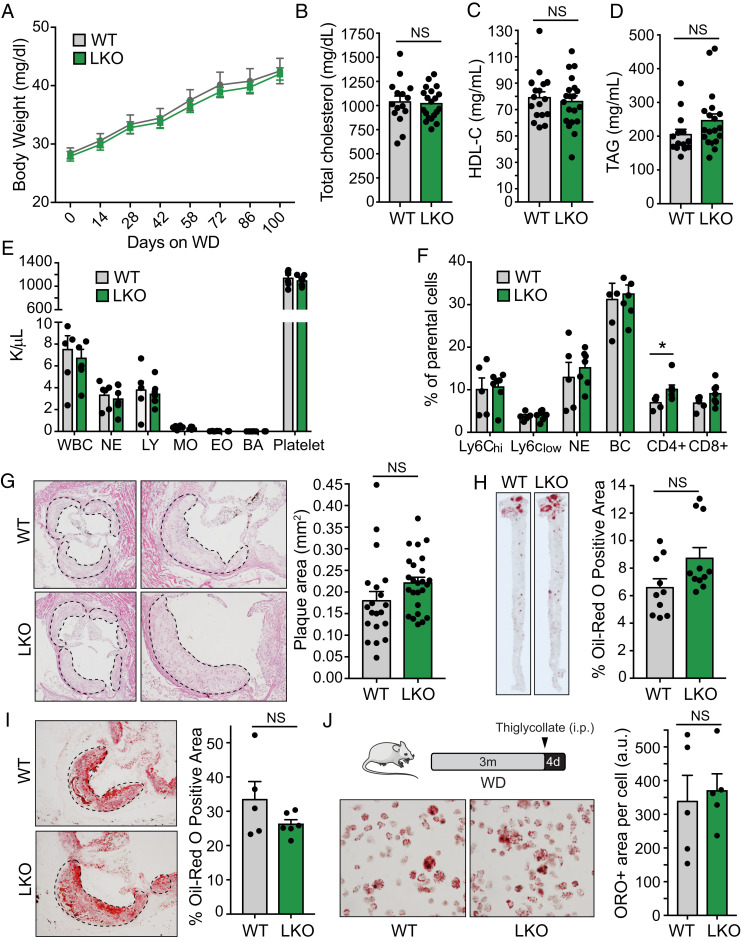Fig. 7.
Hepatic miR-33 deficiency does not impact atherosclerotic plaque development. Characterization of male miR-33loxP/loxP (WT) and miR-33loxP/loxP/AlbuminCre (LKO) mice treated with AAV8-PCSK9 and fed a WD for 16 wk. (A) Body weight trajectories of WT and LKO mice fed a WD (n = 12 to 13). (B–D) Levels of total cholesterol (B), HDL-C (C), and TAGs (D) in plasma of WT and LKO mice following AAV8-PCSK9 treatment and WD feeding (n = 15 to 20). (E) Peripheral blood counts from WT and LKO mice following AAV8-PCSK9 treatment and WD feeding using a Hemavet hematology analyzer (n = 6 to 7). (F) Flow cytometry analysis of circulating leukocytes from WT and LKO mice following AAV8-PCSK9 treatment and WD feeding. Data are expressed as percentages of live cells (n = 5). (G) Representative images (enlarged, Right) and quantification of H&E-stained atherosclerotic plaques within the aortic root of WT and LKO mice following AAV8-PCSK9 treatment and WD feeding (n = 20 to 25). (H) Representative images and quantification of Oil Red O-stained en face preps of WT and LKO mice following AAV8-PCSK9 treatment and WD feeding (n = 10 to 11). (I) Representative images and quantification of Oil Red O-stained atherosclerotic plaques within the aortic root of WT and LKO mice following AAV8-PCSK9 treatment and WD feeding (n = 5 to 6). (J) Representative images and quantification of Oil Red O staining in peritoneal macrophages from WT and LKO mice treated with AAV8-PCSK9 and fed a WD for 12 wk (n = 5). Data represent the mean ± SEM (*P ≤ 0.05 compared with WT animals).

